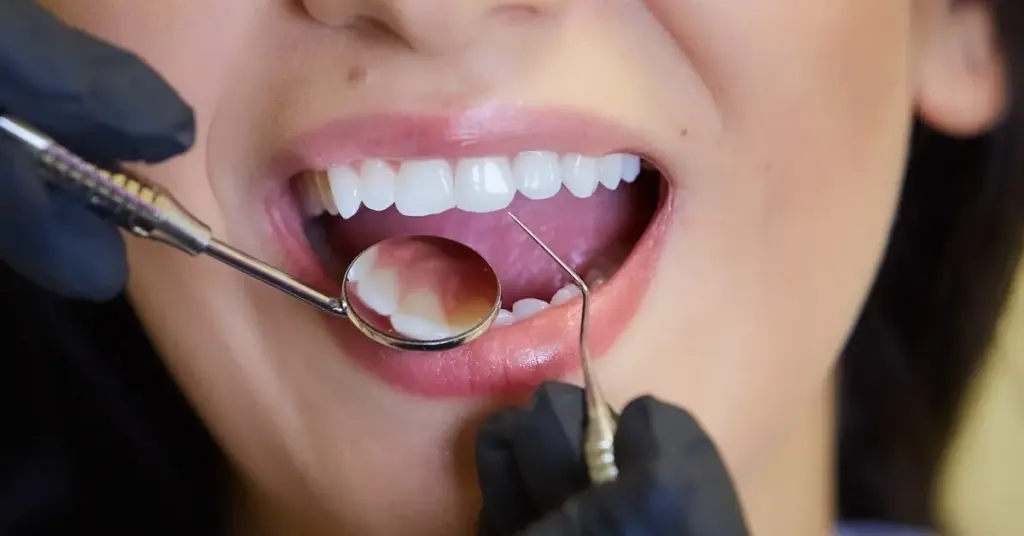Exploring Common Dental Procedures for Healthy Smiles
Table of Contents
Welcome to our insightful exploration of dental procedures essential for maintaining a healthy and radiant smile! This comprehensive guide will unravel the mysteries behind ten common dental procedures, shedding light on their functionality and significance. From routine dental services to specialized treatments, let’s embark on a journey to understand the essence of dental care.
Routine Dental Services: The Backbone of Oral Health


Regular dental cleanings, also known as prophylaxis, involve removing plaque, tartar, and stains from the teeth. Dental hygienists help prevent gum disease, tooth decay, and bad breath by thoroughly cleaning the teeth and gums. Routine examinations by dentists allow for early detection of oral health issues, enabling prompt intervention and treatment.
Additionally, preventive treatments such as fluoride applications and dental sealants protect against cavities and enamel erosion. These preventive measures are essential to comprehensive dental care, promoting long-term oral health and well-being.
Fillings: Restoring Teeth to Their Former Glory
Fillings are among the most common dental treatments used to repair teeth affected by cavities or decay. Cavities form when bacteria in the mouth produce acids that erode tooth enamel, leading to structural damage and sensitivity. Dental fillings, made from composite resin, amalgam, or porcelain, are used to fill in the cavitated areas, restoring the tooth’s shape, strength, and functionality.
During the filling procedure, the dentist removes the decayed portion of the tooth, cleans the affected area, and fills the cavity with the chosen filling material. The filling is then shaped and polished to blend seamlessly with the natural tooth structure. By addressing cavities in their early stages, dentists prevent further decay and preserve the integrity of the affected teeth.
Root Canal Therapy: Salvaging Teeth from the Brink
Root canal therapy is often misunderstood and feared as a dentist’s procedure to save teeth compromised by infection or trauma. When the inner pulp of a tooth becomes infected or inflamed due to deep decay, cracks, or repeated dental procedures, root canal therapy is necessary to remove the damaged tissue and alleviate pain.
During the root canal procedure, the dentist accesses the infected pulp chamber, removes the diseased pulp, and cleanses the root canals to eliminate bacteria and debris. The empty pulp chamber is then filled with a biocompatible material, and the tooth is sealed to prevent further infection. Despite its reputation, root canal therapy is a highly successful treatment that preserves natural teeth and prevents the need for extraction.
Extractions: Making Tough Decisions for Oral Health
While tooth extractions are typically considered a last resort, they are sometimes necessary to address severe decay, overcrowding, or trauma. While dentists strive to preserve natural teeth whenever possible, certain situations may warrant extraction to maintain oral health and prevent complications.
Extractions may be performed for various reasons, including advanced decay that compromises the tooth’s structure, impacted wisdom teeth that cause pain or infection, or orthodontic treatment planning to create space for proper alignment. Dentists carefully evaluate each case, considering the patient’s oral health, treatment goals, and available options before recommending extraction.
During the extraction procedure, the dentist numbs the area with local anesthesia, loosens the tooth from its socket using specialized instruments, and gently removes it from the mouth. Following extraction, proper post-operative care and tooth replacement options, such as dental implants or bridges, may be discussed to restore oral function and aesthetics.
Dental Crowns: Crowning Achievements in Restorative Dentistry


Crowns are recommended for teeth with extensive decay, fractures, or large fillings, as they reinforce the tooth structure and prevent further damage. Additionally, crowns cover dental implants, support dental bridges, and improve the appearance of misshapen or discolored teeth.
During the crown placement procedure, the dentist prepares the tooth by removing a portion of the outer enamel to accommodate the crown. Impressions of the prepared tooth are taken to fabricate a custom crown that matches the natural teeth’ size, shape, and color. Once the crown is ready, it is securely cemented, restoring the tooth’s functionality and appearance.
Dental Bridges: Bridging the Gap with Functional Solutions
Dental bridges offer an effective tooth replacement option for patients with missing teeth, restoring dental aesthetics and functionality. A dental bridge consists of artificial teeth, known as pontics, supported by adjacent natural teeth or dental implants, called abutments.
Bridges are recommended for patients who are missing one or more adjacent teeth and desire a fixed, non-removable solution. By filling the gap left by missing teeth, bridges improve chewing ability, speech clarity, and facial aesthetics while preventing adjacent teeth from shifting out of alignment.
The process of receiving a dental bridge begins with preparing the abutment teeth, which involves reshaping them to accommodate dental crowns. Impressions of the prepared teeth are then taken to fabricate a custom bridge that fits seamlessly into the smile. Once the bridge is ready, it is permanently bonded to the abutment teeth, restoring confidence in the patient’s ability to smile, speak, and eat.
Dental Implants: The Gold Standard in Tooth Replacement
Dental implants represent the pinnacle of tooth replacement technology, providing permanent solutions for missing teeth. Composed of biocompatible materials such as titanium, dental implants are surgically implanted into the jawbone to serve as artificial tooth roots.
Implants offer numerous advantages over traditional tooth replacement options, including enhanced stability, durability, and functionality. Unlike dentures or bridges, implants integrate with the jawbone through osseointegration, providing a solid foundation for replacement teeth and preventing bone loss.
The dental implant procedure typically involves multiple stages, including implant placement, osseointegration, and crown attachment. While the process requires several months to complete, the long-term benefits of dental implants, such as improved chewing efficiency, natural aesthetics, and preserved bone health, make them the gold standard in tooth replacement.
Orthodontic Treatments: Aligning Smiles for a Brighter Future
Orthodontic treatments, from traditional braces to modern aligners, correct misaligned teeth and bite issues, improving oral function, aesthetics, and overall well-being. If left untreated, orthodontic problems, such as crooked teeth, overcrowding, and malocclusions, can negatively impact oral health and self-confidence.
Orthodontic treatments apply gentle pressure to gradually move teeth into proper alignment, resulting in a straighter, more harmonious smile. Traditional braces utilize brackets, wires, and elastics to straighten teeth, while clear aligners, such as Invisalign®, offer a discreet, removable alternative for mild to moderate cases.
The orthodontic treatment process begins with a comprehensive evaluation by an orthodontist to assess the patient’s oral health and treatment needs. Customized treatment plans are then developed to address specific concerns and achieve desired outcomes. With advancements in orthodontic technology and materials, patients can achieve beautifully aligned smiles more comfortably and efficiently than ever before.
Dental Bonding: Simple Solutions for Smile Enhancement
Dental bonding offers a quick and cost-effective solution for minor cosmetic imperfections, such as chips, cracks, or discolorations. Dentists can seamlessly repair and reshape damaged or unsightly teeth using tooth-colored composite resin material, enhancing smiles with minimal invasiveness.
The dental bonding procedure involves etching the tooth surface to create a rough texture for better bonding, applying the composite resin material in layers, and sculpting it to achieve the desired shape and contour. Once the bonding material is hardened with a curing light, the dentist polishes the surface to blend seamlessly with the surrounding teeth.
Dental bonding is a versatile treatment option that can address various aesthetic concerns, including gaps between teeth, uneven tooth lengths, and minor tooth misalignments. With its ability to deliver immediate results in a single dental visit, bonding is an attractive option for patients seeking fast and affordable smile enhancements.
Teeth Whitening: Brightening Smiles with Confidence


Teeth whitening treatments utilize bleaching agents, such as hydrogen peroxide or carbamide peroxide, to break down stains and lighten teeth color. Professional whitening treatments performed in a dental office offer superior results to over-the-counter whitening products, as they are custom-tailored to the patient’s specific needs and supervised by a dental professional.
During a professional teeth whitening procedure, the dentist applies the whitening agent to the teeth and activates it with a special light or laser to enhance the bleaching process. The treatment typically takes an hour, with noticeable results achieved in a single visit. Patients can enjoy a brighter, more confident smile with minimal sensitivity and no damage to the tooth enamel.
Conclusion
Understanding common dental procedures is essential for maintaining optimal oral health and preserving the beauty of your smile. Each procedure, from routine dental services to specialized treatments, promotes oral well-being and confidence. By prioritizing dental care and seeking professional guidance, you can enjoy a lifetime of healthy, radiant smiles.
References:
- American Dental Association. (n.d.). Routine dental cleanings.
- FDI World Dental Federation. (2017). Dental fillings.
- American Association of Endodontists. (n.d.). Root canal therapy. https://www.aae.org/patients/root-canal-treatment/
- American Association of Oral and Maxillofacial Surgeons. (n.d.). Tooth extractions.
- American Academy of Cosmetic Dentistry. (n.d.). Dental crowns.
- American College of Prosthodontists. (n.d.). Dental bridges.
- American Academy of Implant Dentistry. (n.d.). Dental implants.
- American Association of Orthodontists. (n.d.). Orthodontic treatments.
FAQs Section
1. What dental procedures are covered by medical insurance?
Medical insurance typically covers dental procedures deemed medically necessary, such as oral surgeries related to trauma, infections, or oral cavity diseases. Examples include root canal therapy, tooth extractions for impacted wisdom teeth, and surgical treatments for oral cancer. Routine dental services, such as cleanings, fillings, and orthodontic treatments, may or may not be covered by medical insurance, depending on the policy and the specific circumstances of the treatment.
2. What dental procedures does the VA cover?
The Department of Veterans Affairs (VA) provides dental care benefits to eligible veterans under certain conditions. The VA offers comprehensive dental care to veterans who are 100% disabled, have a service-related dental condition, or were prisoners of war. Additionally, veterans enrolled in VA health care programs may be eligible for limited dental services, including diagnostic, preventive, and emergency treatments. However, routine dental services, such as cleanings, fillings, and extractions, are generally not covered unless the veteran meets specific eligibility criteria.
3. Who performs the majority of operative dental procedures?
Dentists perform most operative dental procedures, specifically general dentists and specialists such as endodontists, oral surgeons, prosthodontists, and orthodontists. General dentists are primary care providers trained to diagnose, treat, and manage oral health, including routine procedures like cleanings, fillings, and extractions. Specialists, on the other hand, have additional training and expertise in specific areas of dentistry, allowing them to perform complex surgical and restorative procedures, such as root canal therapy, dental implants, and orthodontic treatments. While some dental procedures may be performed by oral surgeons or other healthcare professionals in certain settings, dentists remain the primary providers of operative dental care in most cases.
Experience Exceptional Dental Care at J Street Dental Group


Whether you’re due for a routine cleaning, need restorative treatments like fillings or crowns, or are considering cosmetic enhancements such as teeth whitening or dental implants, we’re here to help. With our state-of-the-art facilities and commitment to excellence, you can trust that your smile is in good hands.
Don’t wait any longer to invest in your dental health – schedule your appointment with J Street Dental Group today. Our friendly staff is standing by to assist you and ensure your visit is comfortable and stress-free. Take the first step towards a healthier, happier smile – contact us now!



